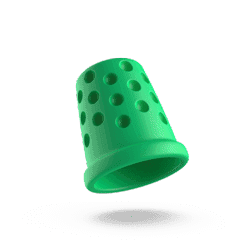And what would you say to those night flyers using their stobes to beyond 2 miles. Are they in violation too?That wasn't the question though. Successfully dumbfounding local LE is not a reliable indicator of FAA compliance. You have already engaged an FAA rep and been told it was not compliant.
You are using an out of date browser. It may not display this or other websites correctly.
You should upgrade or use an alternative browser.
You should upgrade or use an alternative browser.
Flying your drone 1 to 2 miles away during the day ! : The Trick
- Thread starter cgmaxed
- Start date
-
- Tags
- bvlos long range vlos
- Status
- Not open for further replies.
Without a waiver, absolutely. As has been pointed out multiple times, even if you are able to employ bright enough multicolored lights to determine both position and attitude, it is not even remotely credible that you can satisfy 107.31 (a) (3) at those distances.And what would you say to those night flyers using their stobes to beyond 2 miles. Are they in violation too?
"Successfully dumbfounding local LE"?? , Twisting my words to make a false point. Perhaps I shouldn't have used that word. They simply agreed with me, that I met VLOS requirements. There were 5 police watching. I knew i could show the appropriate results.That wasn't the question though. Successfully dumbfounding local LE is not a reliable indicator of FAA compliance. You have already engaged an FAA rep and been told it was not compliant.
I give up. You are settled with you opinion. Different colored lights can't work on a drone anyway. It's too small. What you do at night, or what i do, is put a different type of blinking pattern on each side of the aircraft,. The blinking pattern tells me which side is facing me. Colored lights can't cut it.Without a waiver, absolutely. As has been pointed out multiple times, even if you are able to employ bright enough multicolored lights to determine both position and attitude, it is not even remotely credible that you can satisfy 107.31 (a) (3) at those distances.
Distance is not part of VLOS. If it was, there would be, at least, a max distance limit. Lights and spotters change things up.
Just so everyone knows 107.31 (a) (3)
107.31 (a) (3)
Visual line of sight aircraft operation.
(a) With vision that is unaided by any device other than corrective lenses, the remote pilot in command, the visual observer (if one is used), and the person manipulating the flight control of the small unmanned aircraft system must be able to see the unmanned aircraft throughout the entire flight in order to:
(1) Know the unmanned aircraft's location;
(2) Determine the unmanned aircraft's attitude, altitude, and direction of flight;
(3) Observe the airspace for other air traffic or hazards; and
(4) Determine that the unmanned aircraft does not endanger the life or property of another.
(b) Throughout the entire flight of the small unmanned aircraft, the ability described in paragraph (a) of this section must be exercised by either:
(1) The remote pilot in command and the person manipulating the flight controls of the small unmanned aircraft system; or
(2) A visual observer.
107.31 (a) (3)
Visual line of sight aircraft operation.
(a) With vision that is unaided by any device other than corrective lenses, the remote pilot in command, the visual observer (if one is used), and the person manipulating the flight control of the small unmanned aircraft system must be able to see the unmanned aircraft throughout the entire flight in order to:
(1) Know the unmanned aircraft's location;
(2) Determine the unmanned aircraft's attitude, altitude, and direction of flight;
(3) Observe the airspace for other air traffic or hazards; and
(4) Determine that the unmanned aircraft does not endanger the life or property of another.
(b) Throughout the entire flight of the small unmanned aircraft, the ability described in paragraph (a) of this section must be exercised by either:
(1) The remote pilot in command and the person manipulating the flight controls of the small unmanned aircraft system; or
(2) A visual observer.
Flycaster
Well-Known Member
I have 2 words for this whole thread:
Verifly Insurance.......
Your gonna need it at some point....
OK, 8 words......
Oh wait, they won't even cover/pay out you if you are doing "non conforming flights per the FAA regs" type stuff during the flight.....
I changed the real word to non conforming, but you know what I mean....
EDIT: Verifly Insurance for UAV operators is now going by the name Thimble...

 www.thimble.com
I use them every once in a while when I fly where things could get broken (not the drone) or cut......
www.thimble.com
I use them every once in a while when I fly where things could get broken (not the drone) or cut......
Verifly Insurance.......
Your gonna need it at some point....
OK, 8 words......
Oh wait, they won't even cover/pay out you if you are doing "non conforming flights per the FAA regs" type stuff during the flight.....
I changed the real word to non conforming, but you know what I mean....
EDIT: Verifly Insurance for UAV operators is now going by the name Thimble...

Drone Liability Insurance by the Hour
Thimble no longer offers drone coverage through the Verifly app but you can still get photography and videography insurance with Thimble. Log in to see policy history.
Last edited:
Fair enough. I think we are creating a thread length record. LOLI have 2 words for this whole thread:
Verifly Insurance.......
Your gonna need it at some point....
OK, 8 words......
Oh wait, they won't even cover/pay out you if you are doing "non conforming flights per the FAA regs" type stuff during the flight.....
I changed the real word to non conforming, but you know what I mean....
You are perfectly free to give up, but you are the outlier here. It's not "my opinion" and it's not even been up for debate until you showed up making wild claims about having situational awareness of the airspace around your drone at silly distances. And you keep deflecting the argument back to being able to judge attitude. It's not about that, and actually yes - different colored lights can achieve that. It's about judging the location and path of your drone relative to other traffic. You do not have the depth perception to do that at those distances.I give up. You are settled with you opinion. Different colored lights can't work on a drone anyway. It's too small. What you do at night, or what i do, is put a different type of blinking pattern on each side of the aircraft,. The blinking pattern tells me which side is facing me. Colored lights can't cut it.
So, obviously you are going to ignore all the advice, including from the FAA, and continue to fly like this. But please stop trying to convince everyone that you are compliant - you are not.
- Joined
- May 25, 2017
- Messages
- 8,476
- Reactions
- 7,966
- Age
- 63
(3) Observe the airspace for other air traffic or hazards; and
(4) Determine that the unmanned aircraft does not endanger the life or property of another.
..
I feel people who think they can fly 1 - 2 miles away don't really understand these 2 notations.
In practical terms / spirit of VLOS for UAVs, this is impossible to really adhere to these during daylight hours, and even harder at night. (Can something be harder than impossible ?)
Common sense needs to be applied, and to keep airspace safe for light aircraft (light planes and helis are generally all we should need to be worried about), we should assume something could just happen along one day.
It might be fight # 1000 for a UAV pilot, it could be flight #100, it might never happen (much like car accidents, you don't want one of course, but they happen).
Don't drive a car, IT might happen. Couldn't resist..
I feel people who think they can fly 1 - 2 miles away don't really understand these 2 notations.
In practical terms / spirit of VLOS for UAVs, this is impossible to really adhere to these during daylight hours, and even harder at night. (Can something be harder than impossible ?)
Common sense needs to be applied, and to keep airspace safe for light aircraft (light planes and helis are generally all we should need to be worried about), we should assume something could just happen along one day.
It might be fight # 1000 for a UAV pilot, it could be flight #100, it might never happen (much like car accidents, you don't want one of course, but they happen).
ThanksI have 2 words for this whole thread:
Verifly Insurance.......
Your gonna need it at some point....
OK, 8 words......
Oh wait, they won't even cover/pay out you if you are doing "non conforming flights per the FAA regs" type stuff during the flight.....
I changed the real word to non conforming, but you know what I mean....
EDIT: Verifly Insurance for UAV operators is now going by the name Thimble...
I use them every once in a while when I fly where things could get broken (not the drone) or cut......
Drone Liability Insurance by the Hour
Thimble no longer offers drone coverage through the Verifly app but you can still get photography and videography insurance with Thimble. Log in to see policy history.www.thimble.com
- Joined
- May 25, 2017
- Messages
- 8,476
- Reactions
- 7,966
- Age
- 63
Don't drive a car, IT might happen. Couldn't resist
Of course, and a much higher likelihood of IT happening too !!
Still, life's risky as we are fairly fragile in the event of metal vs human flesh and blood.
The risks to manned aircraft are there, and rules for all sharing the airspace, just like road rules while driving.
We choose to increase risks by going outside these.
Road rules like drone rules are fairly set in stone, but to enhance this, one can fly their drone like one can drive a motor vehicle defensively.
About 4 months ago, I had my first major car accident (at no fault), someone pulled out just 2.5 seconds in front of me and I t-boned them, luckily between the A & B pillars.
A bit over 40 years of driving, and never a previous claim.
Thankfully no one injured, the other party had airbags very efficient, suppose you'd compare to a parachute in an aircraft if practical.
I love flying without my eyes on my drone(s), just using the screen view, the map orientation etc, always keep LOS for signal in good health, and know how to get it home should I lose visual but still have control.
Of course a pilot would have failsafe RTH total signal loss as a back up, with settings properly configured.
Always a minor risk no matter what we do or how we prepare.
In general I probably fly within perhaps a few hundred metres on 90% of my flights, never more than 500 to 600m.
I once flew 1km / 1000m / about 0.62 miles, very remote outback desert region, no more than 80' or so above a several km long iron ore freight train, was daybreak around 5.30am, no likely aircraft and not even a minor airport for something like 200km (125 mi).
Felt so guilty afterwards, but know the only risk I was really facing was possibly losing my drone to some sort of crash.
Question for everybody: I noticed people posting that because their night anticollison lights are so bright, they can use them to increase there VLOS distance at night. They are doing this at night. I haven't seen many compaints against the night flyers using their anti collision lights (3 mile visual required by FAA) to increase their VLOS. What would you say to a night drone flyer increasing their VLOS at night? I see no difference compaired to using a daylight high intensity, constant on tactical light, facing the home point at all times, VS these night drone fliers, increasing VLOS with their 3 mile rated anti collision lights. So, what would you say to these night fliers?
You already asked that in post #81.Question for everybody: I noticed people posting that because their night anticollison lights are so bright, they can use them to increase there VLOS distance at night. They are doing this at night. I haven't seen many compaints against the night flyers using their anti collision lights (3 mile visual required by FAA) to increase their VLOS. What would you say to a night drone flyer increasing their VLOS at night? I see no difference compaired to using a daylight high intensity, constant on tactical light, facing the home point at all times, VS these night drone fliers, increasing VLOS with their 3 mile rated anti collision lights. So, what would you say to these night fliers?
Just so you all know,
Did I get any good answers? I'll Check. I suppose the answer or two was sufficient. Just so you all know, I rarely fly with that light, as it limits flight times and stresses the drones motors and batteries slightly. I usually never pass a quarter or half mile during my daily routine. I know an FAA expert made his comments allready, but I think i'm going to ask a few more. I guess I'll pose the question directly to the FAA's website and see what they say about it. They never mention a safe flight distance or lights (of higher intensity than anti collision strobes) attached to a drone as an aid to see a drone. If I get a response, i'll share it.You already asked that in post #81.
Last edited:
Is your plan just to prolong this thread indefinitely, repeating the same questions and assertions over and over again in an attempt to get anyone to agree with your position?Just so you all know,
Did I get any good answers? I'll Check.
Flycaster
Well-Known Member
The "anti collision" lights of which you speak of, are for the visibilty after sunset of the UAV to OTHER aircraft (the real ones), not to increase ones VLOS distance...Question for everybody: I noticed people posting that because their night anticollison lights are so bright, they can use them to increase there VLOS distance at night. They are doing this at night. I haven't seen many compaints against the night flyers using their anti collision lights (3 mile visual required by FAA) to increase their VLOS. What would you say to a night drone flyer increasing their VLOS at night? I see no difference compaired to using a daylight high intensity, constant on tactical light, facing the home point at all times, VS these night drone fliers, increasing VLOS with their 3 mile rated anti collision lights. So, what would you say to these night fliers?
Flycaster
Well-Known Member
Rationalization ones behavior is my bet......Is your plan just to prolong this thread indefinitely, repeating the same questions and assertions over and over again in an attempt to get anyone to agree with your position?
dirkclod
Well-Known Member
- Status
- Not open for further replies.
Similar threads
- Replies
- 4
- Views
- 1K
- Replies
- 17
- Views
- 26K
- Replies
- 7
- Views
- 3K
DJI Drone Deals
New Threads
-
-
3 We hit another Log, also destroyed our Jib. Awesome Week
- Started by Vernon
- Replies: 0
-
-
-










